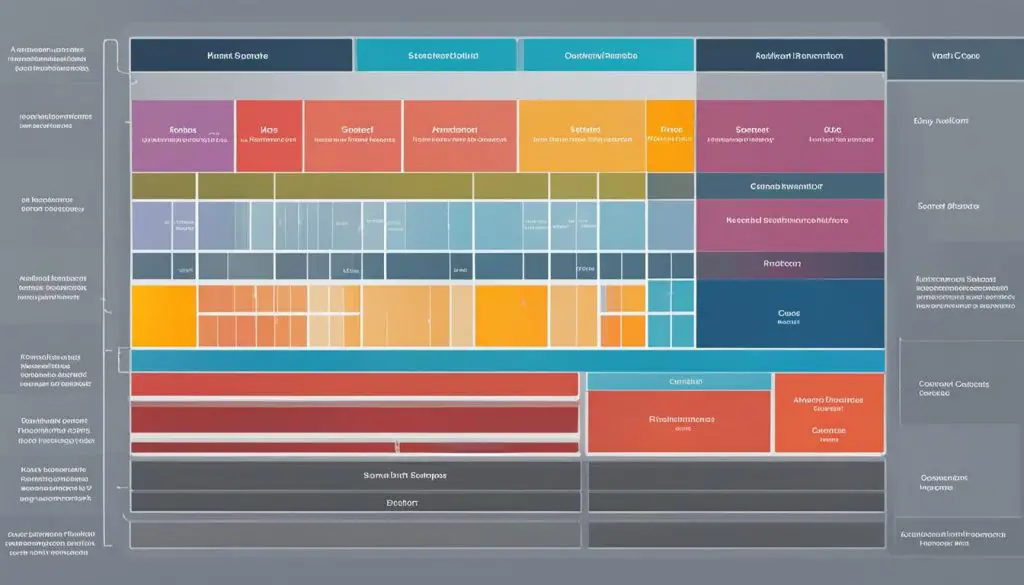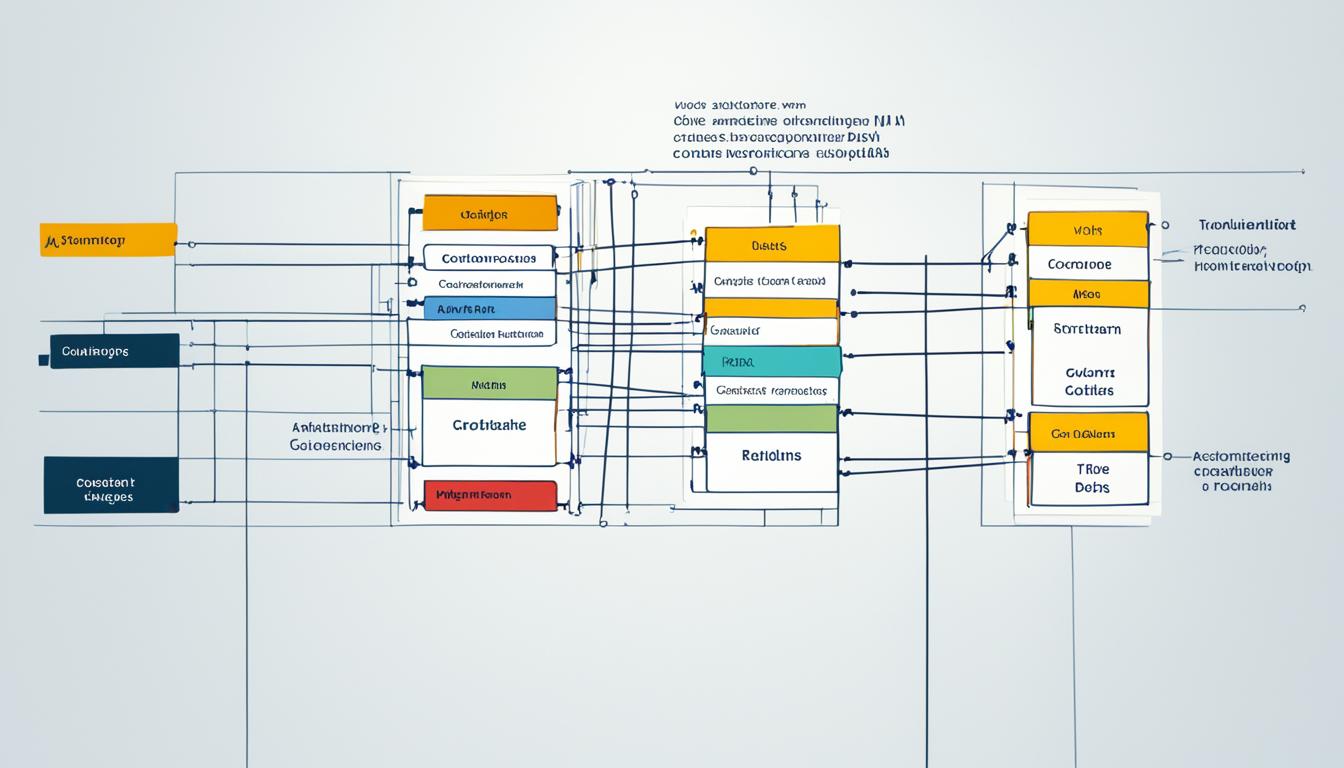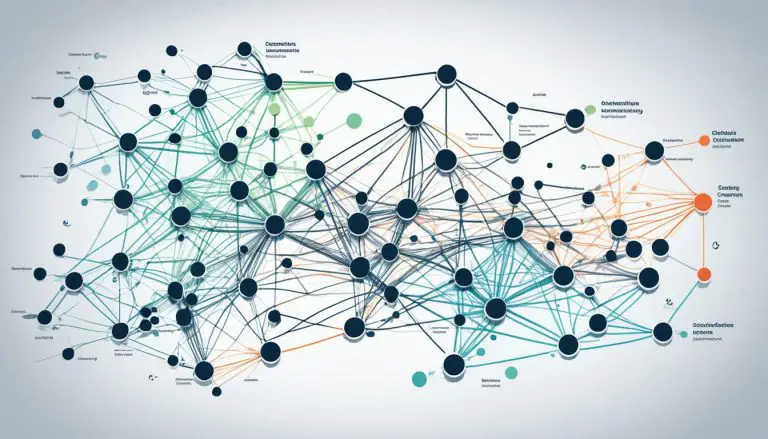What is a Database: Core Function & Purpose
Hey there! Today, I want to talk to you about databases. Have you ever wondered what a database is or how it works? Well, you’ve come to the right place!
A database is a structured way of organizing and storing large amounts of data. It serves as a centralized and secure location for managing and accessing data. Whether it’s storing customer information, sales data, or inventory details, databases play a crucial role in keeping businesses running smoothly.
There are various types of databases, each with its own unique characteristics and applications. Relational databases, like MySQL and Oracle, are the most common type and use tables and structured query language (SQL) for data management. NoSQL databases, on the other hand, are ideal for unstructured and semi-structured data and offer flexibility in data formats.
Understanding databases is becoming increasingly important in today’s data-driven world, especially for individuals entering the job market. From database concepts to architecture, design, and querying, having a solid understanding of databases can open up exciting career opportunities.
Key Takeaways:
- A database is a structured way of organizing and storing large amounts of data.
- Relational databases, like MySQL and Oracle, use tables and SQL for data management.
- NoSQL databases are ideal for unstructured and semi-structured data.
- Understanding databases is essential for data-driven decision-making and job opportunities.
- Stay tuned to learn more about databases in upcoming sections!
What is a Database?
A database is a collection of data that is organized in a specific way to facilitate efficient storage, organization, retrieval, update, and deletion of data. It serves as a digital filing cabinet, where information can be stored, accessed, and managed by different users, applications, or systems. Databases are designed to handle large volumes of data and ensure data consistency and accuracy. They provide a centralized and secure location for storing and managing data.
In a database, data storage refers to the process of physically storing data in a structured manner. It involves allocating disk space, managing file systems, and implementing data storage mechanisms to optimize performance and ensure data integrity.
Data organization in a database involves structuring data in tables, defining relationships between tables, and establishing constraints to maintain data integrity. It enables efficient data retrieval and supports complex queries.
Data retrieval in a database refers to the process of extracting information from the database based on specific criteria or conditions. It involves querying the database using SQL or other query languages to retrieve the desired data.
Data update in a database involves modifying or altering existing data. It includes inserting new records, updating existing records, or deleting unwanted records from the database. By providing mechanisms for data update, databases allow for dynamic and up-to-date information storage.
Data deletion in a database involves removing unwanted records or information from the database. It helps keep the database clean and organized, improving overall database performance.
Overall, databases serve as powerful tools for managing and manipulating data, providing a structured and efficient way to store, organize, retrieve, update, and delete data.
Types of Databases
When it comes to databases, there are several types that serve different purposes. Understanding these different types is crucial in choosing the right database for specific needs. Let’s explore some of the most common types:
Relational Databases
Relational databases are the most widely used type of database. They organize data into tables and use SQL (Structured Query Language) for data management. Relational databases facilitate efficient data storage, retrieval, and manipulation through relationships established between tables.
NoSQL Databases
NoSQL databases are ideal for handling unstructured and semi-structured data. Unlike relational databases, they do not rely on fixed table schemas. NoSQL databases provide flexibility by using various formats such as key-value pairs or document-based structures, making them suitable for handling large volumes of diverse data.
Object-Oriented Databases
Object-oriented databases store data in objects, similar to how objects are defined in object-oriented programming languages. By encapsulating attributes and behaviors into objects, these databases allow for efficient and seamless data management, especially in scenarios where complex relationships and data structures are involved.
Hierarchical Databases
Hierarchical databases organize data in a tree-like structure, where each record is connected to a parent or child record. This type of database is commonly used for managing data with a strict hierarchical order, such as file systems.
Network Databases
Network databases are designed to handle complex relationships between records. Data in this type of database is structured in a network-like manner, allowing records to have multiple connections with other records. Network databases excel in scenarios where complex relationships and data dependencies need to be managed.
“Understanding the different types of databases is crucial in choosing the right one for specific needs.”
| Database Type | Key Characteristics | Examples |
|---|---|---|
| Relational Databases | Structured data, tables, relationships | MySQL, Oracle, Microsoft SQL Server |
| NoSQL Databases | Flexible schemas, unstructured data | MongoDB, Cassandra, Redis |
| Object-Oriented Databases | Store data as objects | db4o, ObjectDB |
| Hierarchical Databases | Tree-like structure | IBM’s Information Management System (IMS) |
| Network Databases | Complex relationships | Integrated Data Store (IDS), Integrated Definition Language (IDL) |
Each type of database offers its own advantages and is suitable for specific applications and data structures. Understanding these differences allows businesses and organizations to make informed decisions when choosing a database solution.
What is RDBMS?
In the world of databases, RDBMS stands for Relational Database Management System. RDBMS is a type of database management system that is based on the relational model, which uses tables to organize and store data. This allows for easy retrieval and manipulation of data, making it efficient and user-friendly.
RDBMSs are widely used in various industries and applications, including finance, e-commerce, healthcare, and more. They provide a structured and organized way to manage data, ensuring data integrity and consistency. Popular RDBMSs include MySQL, Oracle, PostgreSQL, SQL Server, and SQLite, each offering its own set of features and capabilities.
One of the key advantages of using an RDBMS is its support for the SQL programming language. SQL, which stands for Structured Query Language, is the standard language for managing and querying relational databases. It enables users to perform various operations on the database, such as creating tables, inserting data, retrieving information, updating records, and more.
“RDBMSs use tables to organize and store data, allowing for easy retrieval and manipulation.”
With RDBMSs and SQL, users can efficiently retrieve specific data using queries and perform complex operations like joining multiple tables, filtering records based on specific criteria, and aggregating data. The use of SQL greatly simplifies the management and manipulation of data within an RDBMS.
Overall, RDBMSs play a crucial role in the world of databases by providing a reliable and efficient framework for managing and accessing large amounts of data. With their use of tables, intuitive data organization, and support for SQL, RDBMSs have become the go-to choice for many organizations and developers in need of a robust and scalable solution for data management.
Comparison of Popular RDBMSs
| RDBMS | Key Features |
|---|---|
| MySQL | Open-source, high-performance, scalability |
| Oracle | Enterprise-level features, robustness, security |
| PostgreSQL | Open-source, extensibility, advanced features |
| SQL Server | Windows-based, integration with Microsoft products |
| SQLite | Embedded, lightweight, serverless |
Database Design
Designing a database is a crucial step in creating an efficient and functional database system. It involves identifying the data that needs to be stored and organizing it into tables and relationships.
Entity-relationship diagrams (ERDs) are visual representations of the database structure, showing tables, their relationships, and attributes. They provide a clear overview of the database design.
Normalization is another important aspect of database design. It helps minimize redundancy and ensures data consistency. Normalization involves breaking down large tables into smaller, more manageable ones. It follows different levels of normalization, such as First Normal Form (1NF) and Third Normal Form (3NF).
Designing a well-structured database is like planning the blueprint of a building. It lays the foundation for proper data storage, efficient retrieval, and effective data relationships. A well-designed database ensures smooth data management and enhances the overall performance of an application or system.
Advantages of Database Design
- Efficient data storage and retrieval
- Improved data consistency and accuracy
- Reduction of data redundancy
- Easier data maintenance and updates
- Better data organization and structure
By organizing data into tables and establishing relationships between them, a well-designed database provides a structured framework for data management. It allows for efficient data retrieval and ensures the integrity and consistency of the stored information.
Database Design Process
The process of designing a database typically involves the following steps:
- Identifying the data requirements and gathering necessary information
- Creating an entity-relationship diagram (ERD) to visualize the database structure
- Defining the tables and their attributes
- Establishing relationships between the tables
- Applying normalization techniques to eliminate redundancy
- Creating the necessary indexes and constraints

| Step | Description |
|---|---|
| Identifying the data requirements | Gather necessary information about the data to be stored and its relationships. |
| Creating an ERD | Visualize the database structure using an entity-relationship diagram. |
| Defining the tables | Create tables based on the identified data requirements. |
| Establishing relationships | Define relationships between tables using primary and foreign keys. |
| Applying normalization techniques | Normalize the database to eliminate redundancy and ensure data consistency. |
| Creating indexes and constraints | Add indexes and constraints to optimize data retrieval and enforce data integrity. |
What is SQL?
SQL (Structured Query Language) is a programming language used for managing and manipulating databases. It provides a standardized way of interacting with databases and performing various operations on the stored data.
SQL consists of different types of commands that serve specific purposes:
- Data Definition Language (DDL) commands: DDL commands are used to create and modify database structures. They allow users to define tables, specify their columns and data types, set constraints, and establish relationships between tables. Examples of DDL commands include CREATE TABLE, ALTER TABLE, and DROP TABLE.
- Data Manipulation Language (DML) commands: DML commands are used to manipulate and modify data within the database. They enable users to insert, update, delete, and retrieve data from tables. Common DML commands include INSERT, UPDATE, DELETE, and SELECT.
- Data Control Language (DCL) commands: DCL commands are used to manage access and permissions within the database. They allow users to grant or revoke privileges, control user permissions, and manage security aspects. Examples of DCL commands include GRANT and REVOKE.
- Data Query Language (DQL) commands: DQL commands are used to query data and retrieve information from tables. They enable users to specify conditions, filters, and sorting instructions to retrieve specific data subsets. DQL commands are mainly represented by the SELECT statement.
Understanding SQL and its commands is essential for working with databases efficiently and effectively. It allows users to interact with the database, perform complex queries, manipulate data, and manage the database schema.
Conclusion
Databases are a fundamental component in the world of data management. They provide the necessary infrastructure to store, organize, and retrieve large amounts of data efficiently and securely. By understanding the different types of databases available, such as relational, NoSQL, object-oriented, hierarchical, and network databases, individuals can choose the most suitable options for their specific needs.
Relational Database Management Systems (RDBMS) like MySQL, Oracle, PostgreSQL, SQL Server, and SQLite offer robust features for managing and querying data. SQL, the universal language for interacting with databases, empowers users to perform various operations, such as creating tables, inserting data, updating records, and retrieving information.
Designing a well-structured database is another crucial aspect of database management. Through the use of entity-relationship diagrams and normalization techniques, databases can be optimized for performance, minimize redundancy, and ensure data consistency.
Whether working with databases for personal or professional purposes, it is essential to develop a solid understanding of the different types of databases, RDBMSs, and SQL. These skills will empower individuals to work efficiently with data, make informed decisions, and unlock the full potential of their database systems.
FAQ
What is a database?
A database is a structured way of organizing and storing large amounts of data. It serves as a centralized and secure location for managing and accessing data.
What are the types of databases?
Databases can be categorized into various types, including relational, NoSQL, object-oriented, hierarchical, and network databases.
What is RDBMS?
RDBMS stands for Relational Database Management System. It is a type of database management system based on the relational model.
How do I design a database?
Designing a database involves identifying the data that needs to be stored and organizing it into tables and relationships. Entity-relationship diagrams (ERDs) are used to visualize the database structure.
What is SQL?
SQL (Structured Query Language) is a programming language used for managing and manipulating databases. It has different types of commands for creating, modifying, querying, and managing data within databases.
What is the purpose of a database?
Databases serve as a digital filing cabinet, providing a centralized and secure location for storing and managing data. They facilitate efficient storage, organization, retrieval, update, and deletion of data.
- About the Author
- Latest Posts
Mark is a senior content editor at Text-Center.com and has more than 20 years of experience with linux and windows operating systems. He also writes for Biteno.com






